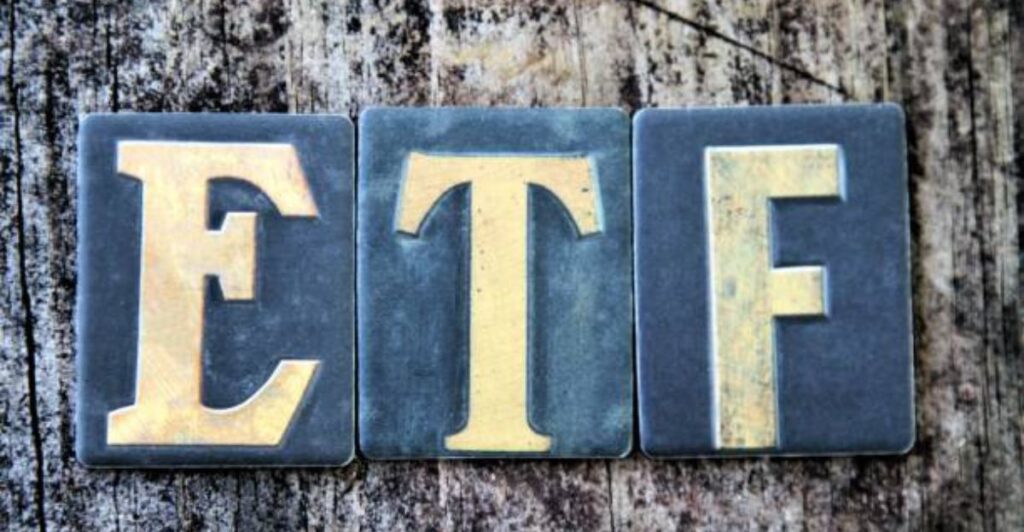✅ Introduction
5 Key Reasons Why ETFs Are Perfect for First-Time Investors
Exchange-Traded Funds (ETFs) have become a go-to investment choice for beginners stepping into the world of finance. With their simplicity, diversification, and cost-effectiveness, ETFs offer a smart way to start building wealth without the complexity of picking individual stocks.
For first-time investors, the financial market can feel overwhelming. Between stock picking, market timing, and risk management, it’s easy to get lost. That’s where ETFs come in. These investment vehicles combine the best of mutual funds and stocks, offering a low-risk, beginner-friendly entry point into investing.
💡 5 Key Reasons Why ETFs Are Perfect for First-Time Investors

1. Diversification Made Easy
• ETFs typically hold a basket of assets (stocks, bonds, commodities).
• This spreads risk across multiple sectors or companies.
• Example: An S&P 500 ETF gives exposure to 500 top U.S. companies.
2. Low Cost & Fees
• Most ETFs have lower expense ratios than mutual funds.
• No active management means fewer fees.
• Great for long-term investors who want to minimize costs.
3. Liquidity & Flexibility
• ETFs trade like stocks on exchanges.
• You can buy/sell anytime during market hours.
• Ideal for those who want control over entry and exit points.
4. Transparency
• Holdings are disclosed daily.
• Investors know exactly what they own.
• Helps build trust and confidence for beginners.
5. Tax Efficiency
• ETFs use an “in-kind” redemption process.
• This minimizes capital gains distributions.
• Better after-tax returns compared to mutual funds.
🚀 Trending Now: Why ETFs Are Gaining Momentum
ETFs are no longer just a niche investment tool—they’re becoming mainstream, especially among first-time and tech-savvy investors. Here’s what’s fueling their rise:

📈 1. Explosive Growth in India
• The Assets Under Management (AUM) for ETFs in India (excluding gold ETFs) surged from ₹2.73 trillion to ₹6.44 trillion between 2021 and early 2024.
• This growth reflects increasing awareness and trust in ETFs among Indian investors.
🌍 2. Global Shift Toward Passive Investing
• Investors worldwide are moving away from actively managed funds.
• ETFs offer low-cost, index-tracking solutions that appeal to long-term wealth builders.
🔥 3. Rise of Active ETFs
• Active ETFs are gaining popularity due to regulatory changes like the SEC’s Rule 6c-11, which allows custom baskets and tax efficiency.
• These ETFs blend active management with the flexibility of ETF structures.
🧠 4. Thematic & Sector-Based ETFs
• Investors are drawn to ETFs focused on AI, clean energy, cybersecurity, and social sentiment.
• These funds allow targeted exposure to trending industries without picking individual stocks.
👥 5. Millennial & Gen Z Adoption
• Younger investors prefer ETFs for their simplicity, transparency, and mobile accessibility.
• Many fintech platforms now offer fractional ETF investing, making it easier to start small.
📝 Suggestions for First-Time Investors
Absolutely, Vinay! Here’s a structured and SEO-friendly section for your article, based on expert insights and current best practices:

Starting your investment journey can feel intimidating, but with the right approach, it becomes a powerful tool for building long-term wealth. Here are practical, beginner-friendly suggestions to help you get started confidently:
🎯 1. Define Your Financial Goals
• Are you investing for retirement, a home, or passive income?
• Clear goals help determine your time horizon, risk tolerance, and asset allocation.
📚 2. Educate Yourself First
• Learn the basics of stocks, bonds, mutual funds, and ETFs.
• Use trusted resources like Invezz and Holborn Assets to build foundational knowledge.
🕰️ 3. Start Early and Be Consistent
• Time is your greatest ally—thanks to compound interest.
• Even small, regular investments can grow significantly over decades.
⚖️ 4. Understand Risk vs. Return
• Higher returns often come with higher risk.
• Choose investments that match your comfort level and financial goals.
📊 5. Diversify Your Portfolio
• Spread your money across different asset classes (stocks, bonds, ETFs).
• Diversification reduces risk and improves long-term stability.
💸 6. Consider Low-Cost ETFs
• ETFs offer instant diversification and lower fees.
• Ideal for beginners who want exposure to broad markets without active management.
🧠 7. Avoid Emotional Decisions
• Don’t panic during market dips or chase trends blindly.
• Stick to your plan and review it periodically.
🧮 8. Use Dollar-Cost Averaging
• Invest a fixed amount regularly, regardless of market conditions.
• This strategy smooths out market volatility over time.
📱 9. Leverage Technology
• Use robo-advisors or investment apps to automate and simplify investing.
• Many platforms offer fractional investing, making it easy to start small.
🧾 10. Review and Rebalance
• Periodically check your portfolio to ensure it aligns with your goals.
• Rebalancing helps maintain your desired risk level.
✅ Why ETFs Work Well for Long-Term Investors
🌍 1. Diversification
• ETFs typically track broad indices like the S&P 500 or Nifty 50, giving exposure to hundreds of companies.
• This reduces individual stock risk and helps stabilize returns over time.
💰 2. Low Cost
• Most ETFs have lower expense ratios compared to actively managed mutual funds.
• For example, the Vanguard S&P 500 ETF charges just 0.03%, making it cost-effective for long-term growth.
🔄 3. Liquidity and Flexibility
• ETFs trade like stocks, allowing you to buy or sell anytime during market hours.
• This flexibility is useful for rebalancing your portfolio without waiting for end-of-day NAVs like mutual funds.
📈 4. Tax Efficiency
• ETFs are generally more tax-efficient due to their structure, which minimizes capital gains distributions.
📊 5. Accessibility
• You can start investing in ETFs with relatively small amounts.
• Many platforms offer fractional shares, making it easy for beginners to build a diversified portfolio.
🧠 Pro Tip: Long-Term ETF Strategy
Consider building a portfolio with a mix like: | ETF | Asset Class | Allocation | |—–|————–|————| | VOO | US Stocks | 40% | | VEU | International Stocks | 30% | | AGG | US Bonds | 20% | | GLD | Gold | 10% |
This kind of allocation balances growth, stability, and inflation protection.
🎯 Conclusion
ETFs offer a powerful combination of simplicity, affordability, and diversification—making them an ideal starting point for new investors. Whether you’re saving for retirement or building wealth slowly, ETFs provide a solid foundation with minimal hassle.
📚 References
• Investopedia – What Is an ETF
• Morningstar – ETF Basics
• NerdWallet – Best ETFs for Beginners
❓FAQs
Q1: Are ETFs safer than individual stocks?
Yes, because they offer diversification, reducing the risk tied to any single company.
Q2: How much money do I need to start investing in ETFs?
You can start with as little as ₹500–₹1000 if using platforms that allow fractional investing.
Q3: Can I earn dividends from ETFs?
Absolutely. Many ETFs pay dividends based on the underlying assets.
Q4: What’s the difference between ETFs and mutual funds?
ETFs trade like stocks and are generally more tax-efficient and lower in cost than mutual funds.

